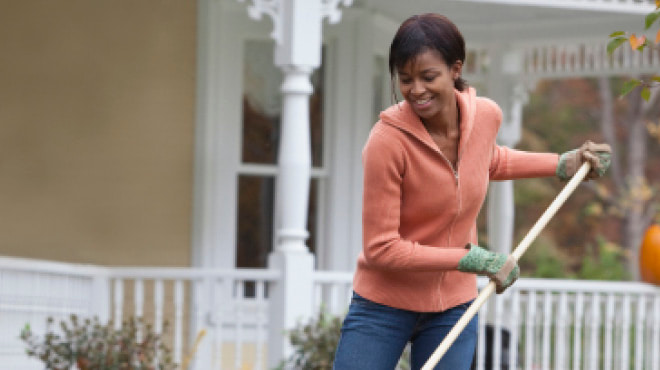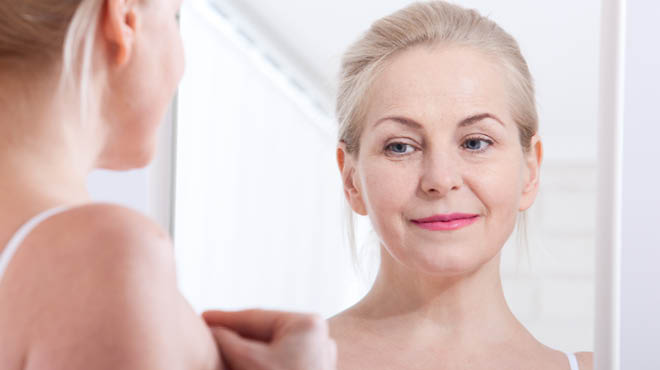Recent Posts
-
 Patient StoriesA lifesaver saved: An EMS veteran’s journey from rescue to recoveryNovember 14, 2025
Patient StoriesA lifesaver saved: An EMS veteran’s journey from rescue to recoveryNovember 14, 2025 -

-

3D mammogram leads to early breast cancer detection

If Janice Maxfield could give other women a piece of wisdom it would be that taking care of you is not selfish. And that includes getting an annual mammogram and then treating yourself to something special afterward to celebrate.
The 54-year-old Sparta, Wisconsin, resident who loves to bow hunt and exercise her springer spaniel dogs is a testament to the importance of early detection for breast cancer. In November 2019, Janice had her annual physical exam with her primary care provider, Sally Pollock, a nurse practitioner in Family Medicine at Mayo Clinic Health System in Onalaska, Wisconsin.
Although Janice does not have a family history of cancer and had been performing monthly self-exams, her mammogram showed some calcification spots in her left breast. She was referred to the Center for Breast Care at Mayo Clinic Health System in La Crosse, Wisconsin, for additional tests.
Breast calcifications are calcium deposits within breast tissue. They are common on mammograms, and they're especially prevalent after age 50. Although breast calcifications are usually noncancerous, or benign, certain patterns of calcifications, such as tight clusters with irregular shapes and fine appearance, may indicate breast cancer or precancerous changes to breast tissue.
"I wasn't worried at that point," says Janice. "Sally said it's not uncommon to have calcifications at my age. But once I had a second mammogram in La Crosse, it elevated quickly, and then I started to get nervous."
A second 3D mammogram, also called digital breast tomosynthesis, and a subsequent biopsy revealed additional calcification in Janice's breast tissue and one lymph node.
"It was about the size of small grains of sand," says Janice. "If I was relying on self-exams, I wouldn't have known (about them) for a long time."
In early January, Janice and her husband, Joel, met with M. Kathleen Christian, M.D., in the Center for Breast Care and was told that the results of her biopsy revealed that she had breast cancer.
"I felt stunned," says Janice. "Everything moved really fast. You can tell that Dr. Christian has been doing this for a long time because she explained everything from the chemo to surgery and radiation. She answered all my questions."
Dr. Christian referred Janice to an oncologist in Mayo Clinic Health System's Stephen and Barbara Slaggie Family Cancer and Blood Disorders Center in La Crosse.
Janice had stage 1 HER2-overexpressing metastatic breast cancer. This type of cancer accounts for about 20% of all breast cancer diagnoses. These cancers tend to grow and spread more aggressively. Her care team mapped out a treatment plan for Janice that included chemotherapy, a lumpectomy and radiation.
A few weeks later, Janice began her treatment, which started with inserting a port into her chest. A port is a central venous catheter to deliver medications and fluids into her body. The surgery was done around noon, and Janice was receiving her first round of chemotherapy by 1 p.m. on the same day.
Janice's first four chemotherapy treatments included doxorubicin, often referred to as the "red devil" due to its bright red color and challenging side effects. Janice lost her hair during this time.
"Losing my hair was the most devastating thing. It was like losing a bit of my identity," says Janice. "When I was ready, a hairdresser friend helped me shave my head. We cried a bit, tried on wigs and then went out to eat."
After eight weeks of the red devil, Janice completed 12 weekly treatments of a different chemotherapy treatment.
"It's strange how relaxed it was when I was getting chemo," says Janice. "We would watch TV, do word searches and have lunch. The staff in the cancer center is just wonderful. They made sure I had everything I needed."
Janice was spared many of the serious side effects of the chemotherapy, something she attributes to her dedication to healthy lifestyle.
"I really watched what I ate during that time. I didn't have any caffeine and ate mostly vegetables and fruit," she says. "I made myself drink a lot of water, and I think that helped flush out my system. I was fairly healthy before the diagnosis, and I think that made a difference."
Janice's body responded well to the chemotherapy, and on July 13 she had a lumpectomy, which is a surgery to remove the cancer or other abnormal tissue from her breast and lymph node. On Aug. 10, Janice started six weeks of radiation, which she finished on Sept. 21.
"This went quicker for me. I would go to work, leave for La Crosse in the afternoon for a radiation session and then drive home, so it became almost routine," she says. "I had some burning on my skin, like a sunburn, but I used lotion and was very careful with my skin."
Detecting breast cancer early is key to the best possible outcomes. Mammograms don't reduce the risk of developing breast cancer, but screening allows your doctor to detect it in the early stages, like in Janice's case, which is important for effective diagnosis and treatment.
Physical therapy after surgery and radiation improved Janice's range of motion, which is critical for her passion of bow hunting. With cancer treatments behind her, Janice is looking forward to spending a lot of time in the woods this fall.
"I don't have any appointments in October or November, so I'm going to enjoy it," she says. "I'm going to walk in the wood, check the (game) cameras and do some bow hunting."
When she reflects on the previous 10 months, Janice now views things through a different lens.
"People always said that I was strong before, but now I feel even stronger," she says. "Don't sweat the small stuff, and let yourself enjoy life. This has been an awakening, and I am going to enjoy what I want to enjoy."
Her advice to other women? Get a mammogram.
"Do it for yourself, your peace of mind and your family. Is it fun? No, but it's important for our peace of mind. Then you are free to have fun and not worry about it," she says with a laugh. "And don't forget to treat yourself after."
That is good advice for all.



